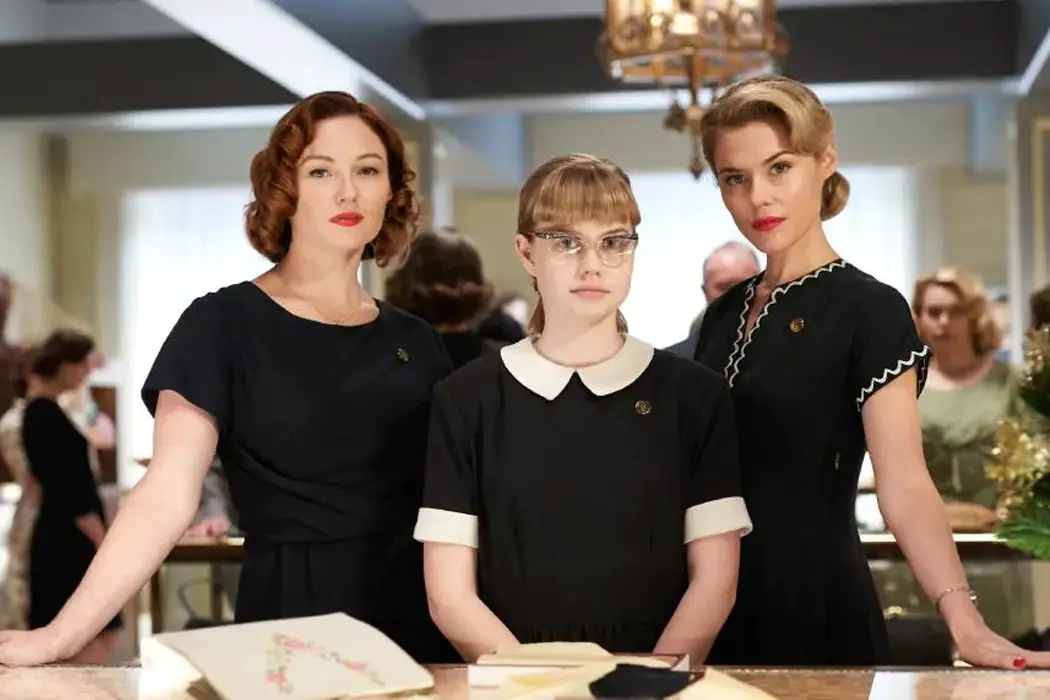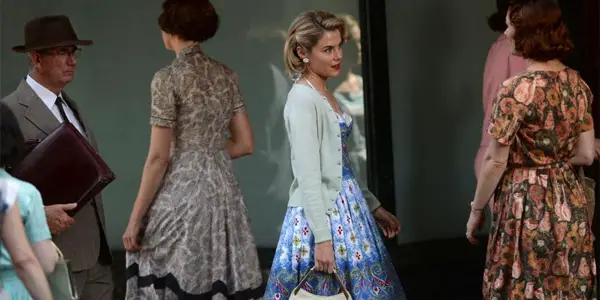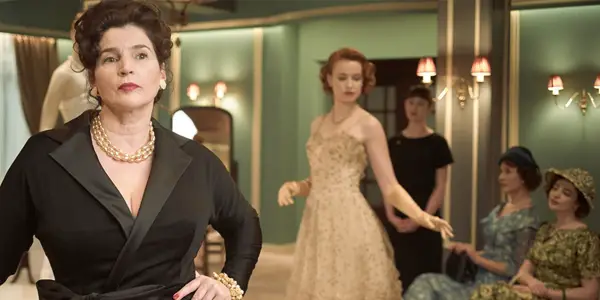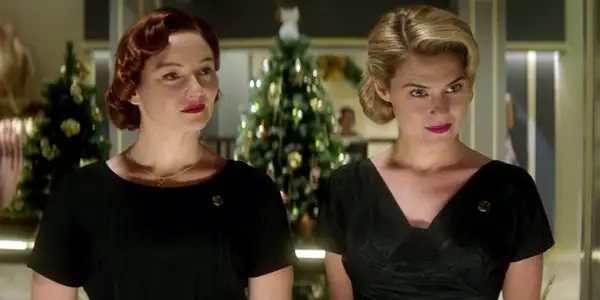LADIES IN BLACK: Beresford’s Bare Minimum

Alex is a 28 year-old West Australian who has a…
Relax guys: Ladies in Black is not an all-female reboot of the Men in Black franchise, but actually Bruce Beresford delivering the bare minimum with this flaccid adaptation Madeleine St John’s novel ‘Women in Black’ (a title change made to avoid similarities with the British horror franchise Woman in Black). I’m not one to get overtly political in my reviews, but due to its prominently female cast and crew, this feels like a missed opportunity for a fresh new female director to make her mark with well-known material like this – just look at what the success of one film has done for Jennifer Kent‘s career.
At the post-premiere lunch I attended for the film (a CinefestOz tradition), actress Celia Massingham made the interesting comment that Beresford had a lot of trust in his actors, giving them “little to no direction”, which honestly sums up everything that’s wrong with this film, an exhibition of how this once-prominent auteur has lost his keen eye for character development, a talent that made him such a dramatic powerhouse back in the 70’s through to the 90’s.
Producer Sue Milliken (a frequent collaborator of Beresford) noted that the reason this project took so long to get off the ground was that St John’s book didn’t quite have enough dramatic material to work for a feature length picture, and it turns out after seeing the final product, whoever told them that was correct.

In Breaker Morant, the Australian classic that scored international attention for Beresford, Major James Francis Thomas (Jack Thompson) enters court for the first time to defend the titular lieutenant, and on his way to his desk, drops his files in front of his clients. It’s a humanising moment which hints at him being incompetent and that the three men he’s defending might be screwed – which makes for his reveal as a quick-witted and defiant lawyer much more of a surprise, for both us and the characters.
It’s inserting small but significant beats like that which shaped Beresford’s trademark humanistic approach, as he was never one with a real unique visual style but he’d always pull the best out of his actors, enriching them with little details to really decorate his dramatic work and give life to the figures within them.
That’s why it’s so disheartening to watch Ladies in Black – due to its showroom setting and flat cinematography, I was questioning if this was a low-key Are You Being Served? reboot rather than the aristocratic comedic-drama that was advertised.
A Pretty Novel Story
Set in Sydney back in 1959, Angourie Rice plays Lisa, an aspiring poet who has picked up a summer intern gig at Goode’s, a high-class department store, as she awaits her exam results which could see her going to university, much to the chagrin of her ignorant father Mr. Miles (Shane Jacobson, in his fourth feature film appearance this year).
Well, it’s good that Beresford and Milliken’s script tells us at the beginning that she wants to be a poet, because we never once see any evidence of this – her main ambitions revolve around wanting to buy an expensive dress, shelving her intelligent personality for scenes of being dazzled by a singular piece of discounted clothing.

Due to its literary origins, there’s no real traditional 3-act plot structure, it’s moreso a relaxed exploration into the lives of Lisa’s co-workers, which include the love-struck Fay (Rachael Taylor), Patty (Alison McGirr) and her missing husband and Magda (a warm Julia Ormond), the fairy godmother “refo” (Aussie slang for refugee, when she isn’t being called a “continental”) who is happy to dispense cathartic wisdom to anybody who’ll listen.
The Anna Karenina Club
Compendium character studies like this have been done successfully before, as dramas which track divergent subplots from different people don’t have to necessarily connect all their stories in a literal sense (especially in book format), but in order to successfully achieve this in a cinematic framework, you have to clearly define how the base characters are related to each other, and what they contribute to the central premise.
Book Club is a recent example of this type of story method, centred on 4 older women who change their lives after reading Fifty Shades of Grey for the first time. Despite having their own paths of growth and change, we understand that they’re friends and share a connection through their book club, a foundation which Ladies in Black lacks.
The friendships, beside the nurturing one between Lisa and Magda, are poorly defined, and we never grasp why we’re watching some of these individual disparate developments. CinefestOz’s opening film last year, Three Summers, suffered from the exact same problem, cramming its fictional musical festival with too many unrelated characters, an assembly issue that causes simultaneous feelings of being overwhelmed and underwhelmed, as there’s just too much material that contributes nothing.
One prime example of this being the underdeveloped mystery of Patty’s missing husband, because apart from her work at Goode’s, she barely seems to have any substantial link with the rest of the cast, which begs the question – if our central characters don’t care about her, why should we?

Despite the lack of an actual plot, Ladies in Black practically trips over itself with incident, and Mark Warner’s editing (who cut Big Trouble in Little China) feels unreliable and distorted – when Patty’s husband eventually returns, he shows up, she faints. The next scene is an inconsequential beach-side walk between Fay and her new Hungarian beau Rudi (Ryan Corr), before going back to Patty’s house, where he delivers the long-awaited answer to where he went. Disjointed bumps like that causes distrust within the audience, as anytime we get engaged with one of the many plot strands, it’s interchanged for another, without any elemental connections to ease the transition.
Ladies in Black: Conclusion
For all of its flaws, part of me doesn’t want to put the full blame on Beresford, as something this overwhelmingly bland coming from a director this noteworthy brings up the debate of him merely being the victim of a modern film culture that demands safe and commercially viable entertainment like this.
What we can discern right now is that somebody on his level should be using his remaining power to push boundaries, as we don’t have many old-school Australian directors still out there working anymore, and in the wake of the still-relevant work of George Miller, Gillian Armstrong and other fellow Aussie contemporaries, glossy monotony like Ladies in Black simply doesn’t cut it anymore.
Is there any upcoming Australian films that you’re looking forward to? Tell us your thoughts in the comments below!
Does content like this matter to you?
Become a Member and support film journalism. Unlock access to all of Film Inquiry`s great articles. Join a community of like-minded readers who are passionate about cinema - get access to our private members Network, give back to independent filmmakers, and more.













